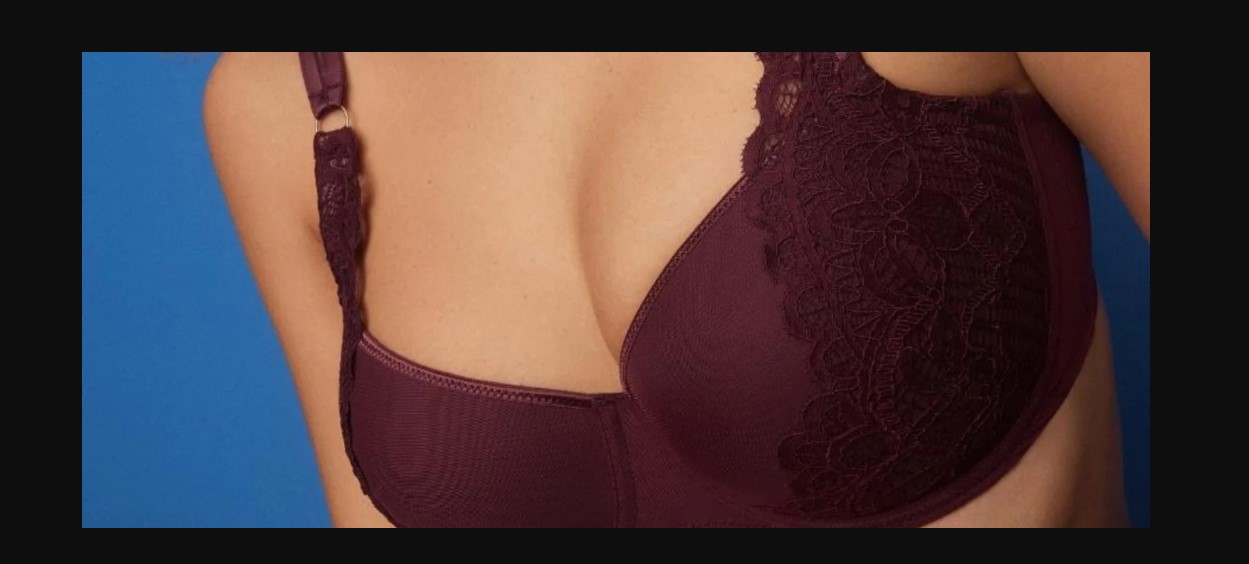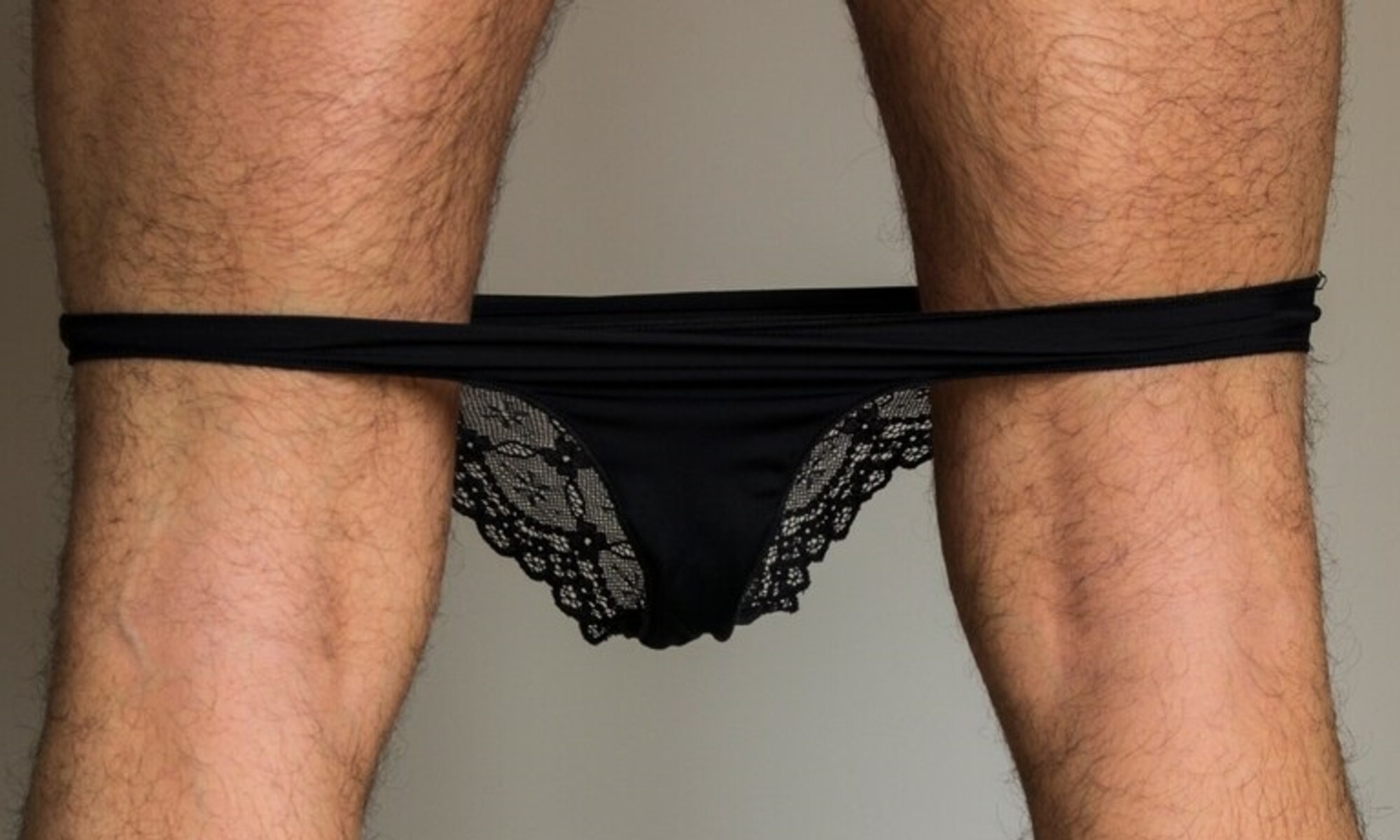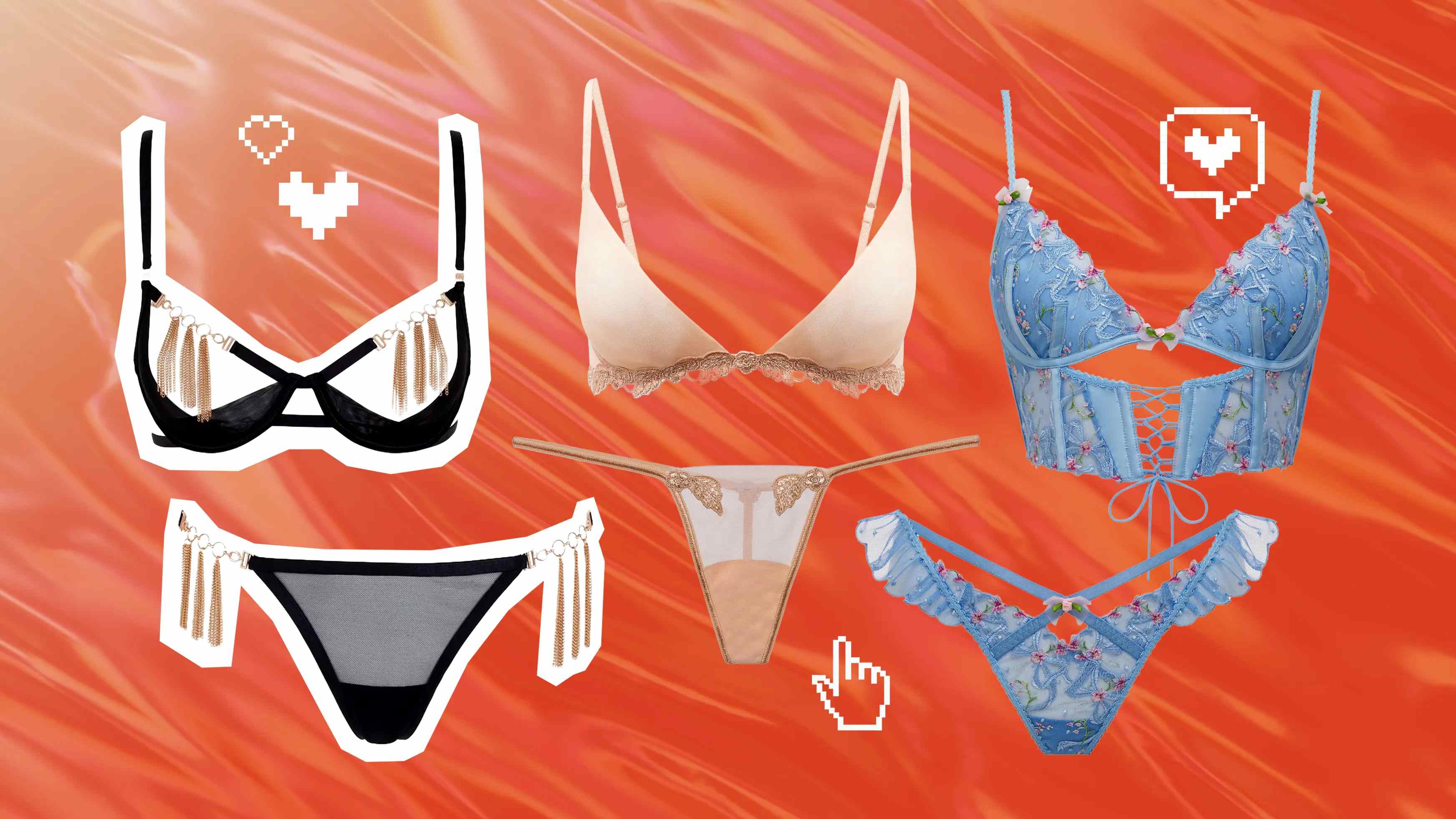Home>Women's Underwear>Thongs>When Was Thong Underwear Invented


Thongs
When Was Thong Underwear Invented
Modified: August 2, 2023
Discover the fascinating history of thongs - a game-changing underwear style that was invented decades ago. Explore when thong underwear first made its appearance and how it revolutionized the lingerie industry.
(Many of the links in this article redirect to a specific reviewed product. Your purchase of these products through affiliate links helps to generate commission for Under-tec.com, at no extra cost. Learn more)
Table of Contents
Introduction
Thong underwear has become a staple in many people’s wardrobes, offering a blend of style and comfort. Known for its minimal coverage and distinctive design, the thong has taken the fashion industry by storm. But have you ever wondered about the origins of this daring undergarment? Where did it come from, and how has it evolved over time?
In this article, we will delve into the fascinating history of thong underwear, tracing its roots back to ancient civilizations and exploring its journey to modern-day popularity. From ancient Egypt to contemporary fashion runways, the thong has left an indelible mark on the world of fashion and become a symbol of body confidence.
We will uncover the ancient origins of the thong, examining its presence in cultures like Egypt and Rome. We will also unravel the evolution of thong underwear, discussing how it transformed from a practical necessity to a provocative fashion statement. Furthermore, we will delve into the controversies surrounding the thong and its impact on society.
So, join us on a journey through time as we explore the intriguing history of thong underwear. Discover the secrets behind this tiny yet significant piece of clothing and gain a deeper appreciation for its cultural significance and enduring appeal.
Ancient Origins of Thong Underwear
The concept of thong-like garments can be traced back to ancient civilizations that prioritized functionality and minimalism in their clothing. While the exact origins are not well-documented, evidence suggests that thong-like garments were worn in various cultures across the globe.
One of the earliest examples of thong-like undergarments can be found in ancient Egypt. The Egyptians, known for their advanced fashion sense, wore loincloths made mostly from linen. These loincloths featured a narrow strip of fabric that passed through the legs and attached to a waistband, leaving the buttocks exposed. It is believed that this design provided both comfort and freedom of movement for the wearer.
In ancient Rome, a similar thong-like garment called the “subligaculum” was worn by athletes and soldiers. This simple piece of clothing consisted of a narrow strip of fabric that passed between the legs and was secured around the waist. The intention behind this design was to ensure a secure and tight fit, allowing for unrestricted movement during physical activities.
Outside of Egypt and Rome, thong-like garments were also prevalent in other ancient civilizations. For example, Mayan and Aztec civilizations in Central America utilized loincloths with a similar design, made from various materials such as cotton and bark cloth. These garments served not only as undergarments but also as indicators of social status and cultural identity.
While the ancient origins of thong underwear may differ across cultures, the common thread throughout these early examples is the emphasis on functionality and minimal coverage. These early iterations laid the foundation for the development and evolution of thong underwear as we know it today.
From the ancient world through to modern times, the thong has stood the test of time, transcending cultures and evolving to suit the changing fashion trends and societal norms. Let us now embark on a journey through time and unravel the fascinating evolution of thong underwear.
The Thong in Ancient Egypt
Ancient Egypt’s rich culture and innovative fashion sense included the use of thong-like undergarments. In this intriguing civilization, the thong served practical and symbolic purposes.
Ancient Egyptian men and women wore loincloths, known as “shendyts” or “schenti” for men and “kalasiris” for women. These garments, made from lightweight linen, consisted of a narrow strip of fabric that wrapped around the waist and passed between the legs, leaving the buttocks exposed. The shendyt and kalasiris provided comfort, breathability, and freedom of movement in the hot Egyptian climate.
The thong-like design was not limited to everyday wear; it also held symbolic meaning. In Ancient Egypt, the body was seen as a representation of divine order and purity. Purity was associated with nudity, hence the minimal coverage of the thong-like garments. The exposure of the buttocks was considered an act of purification, symbolizing the shedding of impurities and connecting with a higher spiritual realm.
In addition to everyday use, the thong played a significant role in religious ceremonies and rituals. It was not uncommon for priests and priestesses to wear loincloths as part of their ceremonial attire, emphasizing their spiritual purity. The thong’s association with divine purification highlights its cultural and religious significance in ancient Egyptian society.
The popularity of thong-like garments continued throughout different periods of Egyptian history, with variations in style and material. For example, during the New Kingdom period (approximately 1550-1070 BC), elite women adorned themselves with beaded and embroidered loincloths, showcasing their social status and fashion sensibility.
It is worth noting that while the thong-like garments were prevalent in ancient Egypt, they were not exclusively worn by both men and women. In some depictions, women are shown wearing more substantial garments that covered their hips and buttocks. The choice of attire depended on personal preferences, social status, and cultural context.
The thong’s popularity in ancient Egypt eventually waned as fashion trends and cultural norms evolved. However, its impact on the fashion world and representation of body confidence are still felt today. Ancient Egypt’s influence on thong-like garments laid the groundwork for their future evolution and the emergence of the modern thong we know today.
Thong-Like Garments in Ancient Rome
Ancient Rome, renowned for its engineering marvels and cultural influence, also made its mark in the realm of thong-like undergarments. In this civilization, both practicality and fashion played a role in the adoption of thong-like garments.
The ancient Romans, particularly athletes and soldiers, wore a garment known as the “subligaculum.” This early form of underwear consisted of a narrow strip of fabric that passed between the legs and was secured around the waist. It provided support, comfort, and flexibility, allowing for unrestricted movement during physical activities.
The subligaculum was primarily made from linen or leather, depending on the wearer’s social status and resources. These materials offered durability and breathability, essential for the demanding lifestyles of athletes and soldiers in ancient Rome.
Outside of the athletic arena, the subligaculum became a popular choice for both men and women as an undergarment. Its practical design and minimal coverage made it suitable for everyday wear, providing comfort and freedom of movement.
However, the adoption of thong-like garments was not limited to functionality alone. In ancient Rome’s fashion-conscious society, the subligaculum also carried a sense of style and eroticism. Roman artworks and mosaics often depicted men and women wearing subligacula in intimate or sensual settings, highlighting the garment’s allure and enticing nature.
For women, the adoption of thong-like garments was also influenced by the fashion trends of the time. The stola, a traditional Roman gown, was often worn with a subligaculum underneath. This combination allowed women to achieve a fashionable silhouette while still maintaining modesty.
It is important to note that the use of thong-like garments in ancient Rome was not limited to the wealthy or elite. People from all social classes embraced this underwear style, emphasizing its widespread appeal and acceptance within the society.
As the Roman Empire expanded and encountered different cultures, it became influenced by the practices and clothing styles of conquered civilizations. These cultural exchanges further diversified and enriched the use of thong-like garments in ancient Rome.
The adoption of thong-like garments in ancient Rome gradually declined as fashion trends and societal norms evolved over time. However, their influence on later fashion trends, including the modern thong, cannot be understated. The ancient Romans’ appreciation for practicality, style, and sensuality helped shape the future of thong underwear and its enduring popularity.
The Evolution of Thong Underwear
The evolution of thong underwear spans centuries, with the garment undergoing significant transformations to reflect changing fashion trends and societal attitudes towards body confidence.
After the decline of thong-like garments in ancient civilizations, thongs made a resurgence in the 20th century, driven by the desire for more revealing and form-fitting undergarments. While early iterations were primarily functional, with a focus on providing minimal coverage, the modern thong emerged as a provocative fashion statement.
In the 1930s, the first modern thongs appeared as two separate fabric pieces connected by a string. Initially designed for exotic dancers, these early thongs offered minimal coverage of the buttocks and were crafted from materials like satin or silk.
Throughout the mid-20th century, various designers and fashion-forward individuals began experimenting with thong designs. They explored different materials, such as lace and mesh, and introduced enhancements like embellishments and patterns to cater to diverse tastes.
However, it was in the 1980s that the thong gained significant popularity and became a mainstream fashion item. The rise of high-cut jeans and form-fitting dresses encouraged designers to create thongs that eliminated visible panty lines. This shift, combined with the increasing embrace of body positivity and self-expression, propelled the thong into the spotlight.
The 1990s saw the thong reach new heights of popularity, becoming a staple in the lingerie and swimwear industry. Celebrities and supermodels embraced the trend, making bold public appearances in thongs on red carpets and magazine covers. This widespread exposure solidified the thong’s position as a symbol of confidence and sensuality.
In recent years, the evolution of thong underwear has led to even more diverse styles and designs. Thongs now come in a range of materials, including cotton, microfiber, and even eco-friendly fabrics. Different cuts, such as low-rise, high-rise, and G-string, cater to individual preferences and offer varying levels of coverage.
Additionally, the modern thong has transcended traditional gender boundaries. While historically associated with women’s lingerie, thongs are now designed and marketed for men as well, reflecting the evolving attitudes towards gendered fashion and individual expression.
The evolution of thong underwear has been driven by a combination of fashion trends, cultural shifts, and the desire for comfort and confidence. From its practical beginnings in ancient civilizations to its current status as a fashion statement, the thong has undergone a remarkable transformation, leaving an indelible mark on the world of fashion and self-expression.
The Modern Thong: Popularity and Controversy
The modern thong has become a ubiquitous undergarment, worn by individuals of all genders and embraced for its unique blend of style and comfort. However, its rise in popularity has also been met with controversy and debate.
One of the primary factors contributing to the widespread popularity of thong underwear is its ability to eliminate visible panty lines, allowing for a seamless and smooth look under clothing. This has made thongs a popular choice for those wearing form-fitting outfits or tight clothing. The minimal coverage provided by thongs also offers a sense of freedom and liberation for many wearers.
Beyond practicality, the thong has become a symbol of body confidence and self-expression. Many individuals feel empowered and sexy when wearing thongs, embracing their bodies and highlighting their curves. The fashion industry has responded to this demand by offering a wide range of styles, fabrics, and designs to cater to different preferences and tastes.
However, the popularity of thong underwear has not been without controversy. Critics argue that thongs sexualize and objectify the body, perpetuating unrealistic beauty standards and reinforcing the idea that women should conform to a particular aesthetic. There are concerns about the pressure placed on individuals, particularly women, to wear thongs in order to feel attractive or desirable.
Additionally, some argue that thongs can be uncomfortable to wear for extended periods, particularly if not made from breathable materials. There have been debates about the potential health risks associated with thongs, such as increased risk of infections or bacterial growth due to the close contact between the fabric and intimate areas.
Despite the controversies surrounding thong underwear, its popularity continues to grow. The fashion industry has responded by evolving and innovating thong designs to address concerns about comfort and inclusivity. For example, there are now thongs with wider waistbands for added support, moisture-wicking fabrics for improved breathability, and size-inclusive options to cater to diverse body types.
Ultimately, the choice to wear a thong or any type of undergarment is a personal one, dependent on individual preferences, comfort levels, and self-expression. It is essential to embrace a diverse range of options and celebrate body positivity, allowing individuals to make their own choices without judgment or pressure.
As the fashion landscape continues to evolve, it is likely that the popularity and controversy surrounding thong underwear will persist. But what remains undeniable is the impact of the thong on the fashion world and its ability to empower individuals to embrace their bodies and express themselves confidently.
The Impact of Thong Underwear on Fashion
Thong underwear has had a profound impact on the world of fashion, transforming not only the undergarment industry but also influencing outerwear, swimwear, and even popular culture. Its unique design and daring style have left an indelible mark on the fashion world.
One of the key ways in which thong underwear has influenced fashion is through its ability to eliminate visible panty lines. This innovation has revolutionized the way people dress, allowing for a sleek and seamless look under form-fitting clothing. As a result, designers have been able to experiment with more figure-hugging and body-conscious designs, confident that underwear lines will remain hidden.
Thongs have also played a significant role in swimwear fashion, with the rise of the bikini thong. This daring swimsuit style, popularized in the 1970s, offers minimal coverage and showcases the wearer’s curves. The bikini thong has become synonymous with beach culture, exotic getaways, and a sense of body confidence.
Moreover, the mainstream acceptance of thong underwear has given rise to new fashion trends and styles. From lingerie to evening gowns, dresses, and even activewear, the influence of thong design elements can be seen across various fashion categories. Cut-out details, mesh inserts, and thong-style straps have become common features in clothing, adding a hint of sensuality and creating eye-catching silhouettes.
The impact of thong underwear can also be seen in popular culture. Thongs have become iconic symbols of sensuality and femininity, regularly featured in music videos, movies, and advertising campaigns. Celebrities and fashion influencers have embraced the thong trend, proudly displaying their personal style choices on red carpets and social media platforms. This cultural influence has propelled the thong into the realm of fashion statement, transcending its function as a practical undergarment.
Furthermore, the popularity of thong underwear has sparked conversations around body positivity and inclusivity. The visibility and acceptance of different body types wearing thongs challenge traditional beauty standards and encourage self-acceptance. Thongs have become a means for individuals to embrace their bodies, regardless of societal expectations or norms.
As fashion continues to evolve, the impact of thong underwear will persist. The innovation and creativity inspired by the thong have led to endless possibilities for designers and consumers. Whether chosen for practicality, style, or self-expression, thong underwear will undoubtedly continue to have a significant impact on fashion for years to come.
Conclusion
The history and evolution of thong underwear are a testament to its enduring appeal and cultural significance. From its ancient origins in civilizations like Egypt and Rome to its modern-day popularity, the thong has made a lasting impact on the world of fashion and self-expression.
Ancient civilizations utilized thong-like garments for practical purposes, emphasizing comfort and freedom of movement. These early iterations set the stage for the development of thong underwear as we know it today.
The modern thong has evolved to become a provocative and empowering fashion statement. Its popularity stems from its ability to eliminate visible panty lines and accentuate the body’s natural curves. Thongs have become symbols of body confidence and self-expression, challenging societal beauty standards and promoting inclusivity.
Thong underwear has not been without controversy. Critics argue that it can perpetuate unrealistic beauty standards or be uncomfortable to wear for extended periods. However, the fashion industry has responded by offering a range of designs and materials to cater to diverse preferences and address concerns about comfort.
The impact of thong underwear extends beyond the realm of undergarments. It has influenced swimwear fashion, outerwear designs, and popular culture, becoming an iconic symbol of sensuality and femininity. Thong-inspired elements can be seen in clothing styles, bringing a hint of allure and creating eye-catching silhouettes.
Ultimately, the choice to wear a thong or any type of undergarment is a personal one, shaped by individual preferences, comfort levels, and self-expression. Thong underwear has provided individuals with a way to embrace their bodies and feel confident in their own skin.
As fashion continues to evolve, thong underwear will likely continue to influence trends and contribute to discussions surrounding body positivity and self-acceptance. Its impact on fashion can be seen in the evolution of design, the breaking of traditional norms, and the celebration of diverse body types.
So, whether you choose to embrace thong underwear for its practicality, fashion-forward style, or daring appeal, it is clear that this tiny garment has left a lasting legacy and will continue to make its mark in the world of fashion for years to come.










